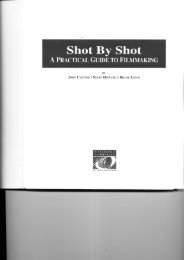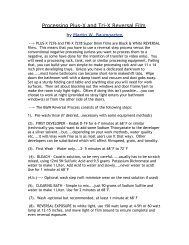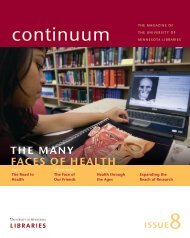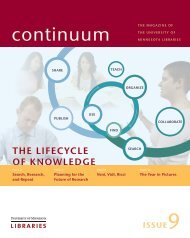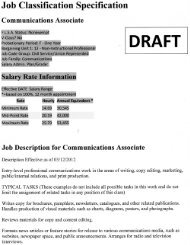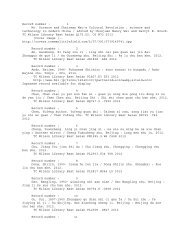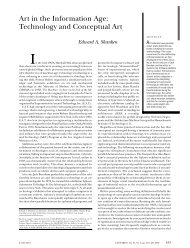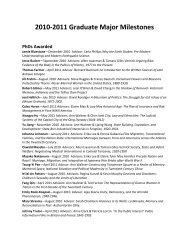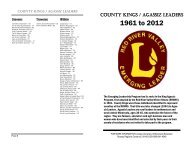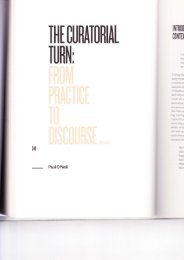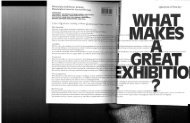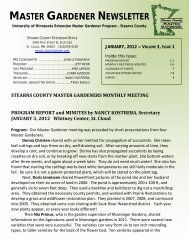Labelling and Marking Museum Objects Booklet
Labelling and Marking Museum Objects Booklet
Labelling and Marking Museum Objects Booklet
You also want an ePaper? Increase the reach of your titles
YUMPU automatically turns print PDFs into web optimized ePapers that Google loves.
<strong>Labelling</strong> <strong>and</strong> <strong>Marking</strong> <strong>Museum</strong> <strong>Objects</strong><br />
SPECTRUM Procedure Acquisition<br />
These labelling <strong>and</strong> marking guidelines have been developed by the Collections Trust with the help<br />
of Vivien Chapman at the National Conservation Centre, National <strong>Museum</strong>s Liverpool (NML).<br />
Why do it?<br />
<strong>Labelling</strong> <strong>and</strong> marking is part of the SPECTRUM procedure Acquisition, a SPECTRUM<br />
Primary Procedure, required to be in place for <strong>Museum</strong> Accreditation (see below). The<br />
Accreditation St<strong>and</strong>ard says that:<br />
'<strong>Marking</strong> <strong>and</strong> <strong>Labelling</strong>: Each accessioned item, or group of items, must be marked <strong>and</strong>/or<br />
labelled with its/their unique identity number in a way that is as permanent as possible<br />
without damaging the item.'<br />
Every item in a museum collection must carry its identity number at all times, so that it<br />
can be linked to the information a museum holds about the object. If this bond between the<br />
object <strong>and</strong> its documentation is broken, the consequences may be serious. At best, time will<br />
be wasted because of the need to track down documentation <strong>and</strong> re-establish the link. At<br />
worst, the object will lose its provenance <strong>and</strong> other associated information for all time.<br />
Note that the marking an object is not intended to act as a security device in the case of theft<br />
of the object.<br />
The Minimum St<strong>and</strong>ard for labelling <strong>and</strong> marking under Acquisition, states that museums should:<br />
Ensure that a unique number is assigned to, <strong>and</strong> physically associated with all objects.<br />
When is it done <strong>and</strong> who does it?<br />
<strong>Marking</strong> <strong>and</strong>/or labelling an object should be done as part of the accessioning process. Items<br />
on loan or not yet accepted into the collection should not be marked. Items which do not<br />
belong the museum, such as loans or potential donations should be labelled.<br />
The preference should normally be to physically mark objects: however in some cases this<br />
may not be possible. These guidelines will help you label <strong>and</strong> mark the items in your<br />
collections in ways which are:<br />
Secure - The chances of accidental removal of the label or mark from the object<br />
must be extremely low;<br />
Reversible - It should be possible for a label or mark to be removed intentionally<br />
from an object, even after 50-100 years with as little trace as possible;<br />
Safe for the object - Neither the materials applied to the object nor the method by<br />
which they are applied should risk significant damage to the object;<br />
Discreet but visible - The recommended methods should not spoil the appearance<br />
of the object, nor obscure important detail. However, the number should be visible<br />
enough to reduce the need to h<strong>and</strong>le the object;<br />
Convenient <strong>and</strong> safe for staff <strong>and</strong> volunteers - Materials should be easily available<br />
in small quantities at a reasonable price, <strong>and</strong> should not pose significant risks to health if<br />
used in accordance with the guidelines recommended by a local CoSHH risk assessment.<br />
1



